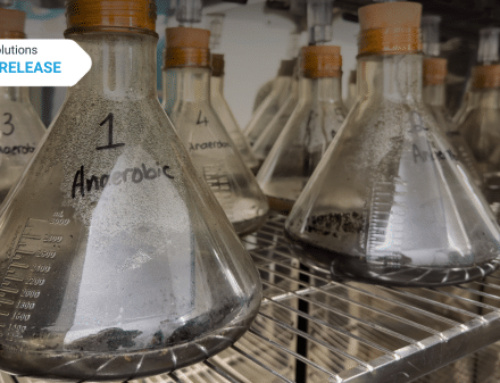In 2020, the UK government published the Ten Point Plan for a Green Industrial Revolution. The government announced ending the sale of new petrol and diesel cars in the UK by 2030. Point 4 (Accelerating the Shift to Zero-Emission Vehicles) and Point 5 (Green Public Transport, Cycling and Walking) target the push towards zero-emission through optimising green transportation. Inevitably, this puts a spotlight on electric vehicles (EV), including plug-in and full hybrid vehicles, as a tactic to achieve zero emission. However, what does the increasing demand for electric vehicles mean? Are we prepared for it?
A Glimpse of Lithium-ion batteries
Although lithium-ion battery emphasises “lithium”, it only contains a small percentage of lithium (around 2-6%). Lithium-ion cells comprise a mixture of valuable metals in their formula, depending on their type. The six common lithium-ion cell types include:
- Lithium Cobalt Oxide
- Lithium Nickel Manganese Cobalt Oxide
- Lithium Manganese Oxide
- Lithium Nickel Cobalt Aluminium Oxide
- Lithium Iron Phosphate
- Lithium Titanate
Each cell type varies between its performance, cost, safety, and other factors. Moreover, each battery type will have numerous variants of cell chemistries depending on requirements.
Zero emission tunnel vision
In 2020 alone, the sales of EV increased by 186% representing 108,000 EV sales in the UK. To put it into perspective, the famous Tesla Roadster comprises 6,831 individual lithium-ion cells. This demonstrates the increasing pressure on our finite metals. The supply of lithium-ion batteries is not only dependent on lithium, as the cathode consists of other rare metals (Nickel, Cobalt and Manganese), pushing intensive mining to the brink. The question which then arises is: will there be a shortage of lithium-ion batteries?
According to S&P Global Platts Analytics, lithium supply will triple by 2025. At home in the UK, the Faraday project predicts Britain will have 3 fully functional gigafactories running by 2030, creating up to 6500 cells per day. This equates to a potential 2000 tonnes of battery waste at end of life thus, an estimate of 730,000 tonnes per year, leading to 1.8m t/CO2 of extra GHG emissions. Without effective recycling, it is estimated that these 3 gigafactories alone could generate £220m worth of cathode scrap annually during the manufacturing process, ending up on the production shop floor or in defective batteries. Although some experts have stated that the problem does not lie in the volume of lithium but rather in how quickly it can be extracted to meet the demand. Nevertheless, the rapidly growing demand to “Race to Zero” highlights the need to consider end-of-life management for lithium-ion batteries.
Before we talk about recycling
According to the Faraday Institution, an estimate of 16,500 tonnes of battery packs will require processing by 2028 and the volume will only continue to increase thereafter. A report published by the Faraday Institution stated that,
“Although large amounts of lithium-ion battery packs will be available for recycling from around 2028, there are no substantial recycling facilities currently or planned for the UK.”
Most UK manufacturers export spent lithium-ion batteries to other European recycling facilities. This is logistically challenging as it is expensive and generates unnecessary carbon footprints, rendering it a short-term solution. This urges the UK to act swiftly to provide sustainable solutions in preparation for the stockpile of soon-to-be EV battery waste. This means, we are not only racing to develop battery manufacturing factories to meet the demand, but we are racing to provide robust recycling infrastructure to manage the batteries at their end-of-life.
Lithium-ion battery Recycling
Recycling lithium-ion batteries aim to separate the important components and raw materials from the black mass so they can be reused for future production.
The existing lithium-ion battery recycling method typically involves hydrometallurgy or pyrometallurgy. Hydrometallurgical methods require concentrated acids to leach and extract cathode metals. Not only does this poses danger to the environment, but the process rarely recovers high purity metals. Pyrometallurgical methods are smelting, using temperature above 700°C which has low efficiency and low recovery rates. These methods are hazardous and non-environmentally friendly processes with a low recovery rate of the targeted metals.
How we make an impact – CellMine
Impact Solutions is one of four winners of the 2020 Ecosurety Exploration Fund that enabled the project CellMine. CellMine redefines battery recycling by selectively targeting valuable cathode metals using a novel green solvent. Impact Solutions used real-world samples of black mass from a mixed feedstock of battery waste during the trials. CellMine targets and selectively recovers lithium-ion cathode materials with a high recovery rate and at a purity of 99.5+% (battery-grade). This means the recovered metal can be reused in batteries instead of lower-end applications. The CellMine process operates at a lower temperature that is below 120oC, which is substantially more cost and energy effective than the current state-of-art.
The initial £100K fund by Ecosurety allowed CellMine to prove the concept of using a novel green-solvent to selectively recover finite metals used in lithium-ion batteries. The success of this project secured a further £500,000 funding from the UK government (Innovate UK) which will allow a further 18 months of development. The continuation phase focuses on expanding the research to selectively recover all target materials from the black mass; at the same time, exploring the commercial feasibility of the process, aiming to up-scale CellMine from laboratory scale to a commercialised pilot plant. Where possible, the research team at Impact Solutions will aim to reuse the solvent to further optimise the operating costs and environmental impact of the CellMine technology.
Impact solutions partnered with St. Andrews University, world-leading in battery research, who will test and validate the products from the CellMine technology for use in new real-world batteries. Ecosurety is a key industrial partner that will help develop a route to market for CellMine by developing a supply chain and a feedstock network.

Preparing for the future because it’s here!
The rapidly expanding electric vehicle market is driven by many factors, including environmental and regulatory pressure. Although Lithium-ion battery recycling is not an antidote for its supply issues, it is a necessary complementary means to support its supply chain. Moreover, recycling should not be at the expense of environmental sustainability.
Stay updated with the development of CellMine on our social media platforms (LinkedIn, Twitter, Facebook). Alternatively, you can contact us today: info@impact-solutions.co.uk / +44 (0) 1324 489 182


